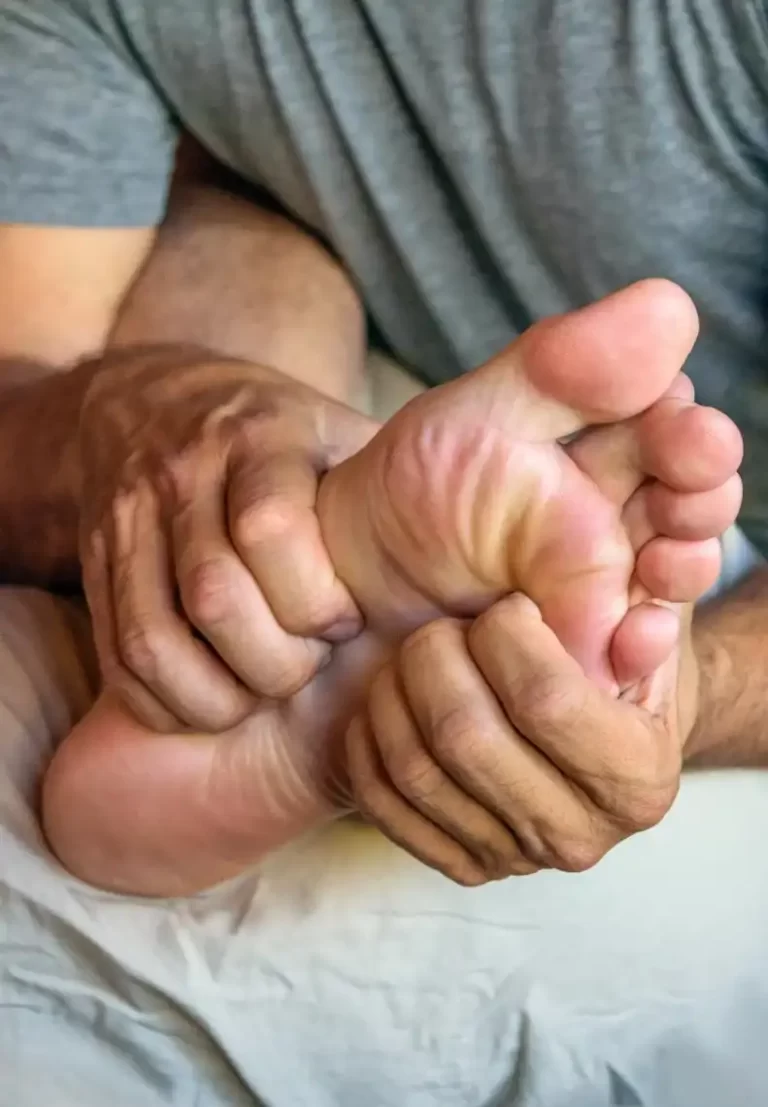Do People with Flat Feet Need Arch Support? Our Guide
In this guide, we’ll look into do people with flat feet need arch support. We’ll cover the benefits of using insoles and orthotics for flat feet. And we’ll explain what causes flat feet and how arch support can make a difference.
We will also talk about how arch support helps with overpronation. This is a common issue for people with flat feet. We’ll give tips on selecting the best arch support, insoles, and orthotics. By the end, you should know if arch support is right for you and how it can help your foot health.
Key Takeaways
- Flat feet, also known as pes planus, can be caused by various factors, including heredity, injury, or age.
- Arch support is designed to provide stability, cushioning, and support to the arch of the foot, which is often compromised in individuals with flat feet.
- The need for arch support for people with flat feet depends on several factors, including the severity of the condition, activity level, and any underlying medical issues.
- Arch support can help address overpronation, a common issue associated with flat feet, by providing better control and stability during movement.
- There are various types of arch support options available, including over-the-counter insoles, custom-made orthotics, and specialized flat feet insoles and shoe inserts.
Understanding Flat Feet
Flat feet, also called pes planus, is a condition where the foot’s arch partly or fully falls. The bottom of the foot touches the ground more than it should. This affects many people, young and old, and those who are active.
What Are Flat Feet?
Flat feet are when your foot doesn’t have a normal arch. Sometimes this happens when you’re born. Other times, it’s because of different things that occur during life.
Causes of Flat Feet
Flat feet can come from family traits or happen because of life events. Here’s more on what causes flat feet:
- Inherited problems in the foot’s structure
- Being overweight, which strains your feet
- Foot or ankle injuries
- Medical issues like arthritis or diabetes
- As you age, your feet might naturally change
Symptoms of Flat Feet
If you have flat feet, you might notice issues like:
- Pain in your feet, ankles, or legs
- Getting tired quickly from standing or walking
- Your feet roll too much inward
- Your feet or ankles can swell
- It’s hard to find shoes that feel good
By knowing about flat feet and its signs, we can better support those dealing with it.
The Importance of Arch Support
If you have flat feet, knowing about arch support is really important. Arch support gives you the stability, cushioning, and alignment you need. This is especially true for people with flat feet. It helps a lot.
What Is Arch Support?
Arch support is anything that helps the arches of your feet. It can be special insoles or orthotics made just for you. These things make sure your feet are well-supported, especially if they’re flat.
Benefits of Arch Support for Flat Feet
For people with flat feet, adding arch support has many advantages. Here are a few:
| Benefit | Description |
|---|---|
| Improved Stability | It keeps your feet in the right place, lowering the chance of overuse. This gives a stronger base for your whole body. |
| Reduced Foot Pain | With the right support, it’s easier on your arches. This means less pain, like in your heels or from plantar fasciitis. |
| Enhanced Shock Absorption | The arch support cushions your feet. It absorbs shocks from walking or running. This lowers the chance of getting hurt and makes it more comfortable. |
| Improved Posture and Gait | It helps fix walking problems caused by flat feet. Better support means your posture, walking, and body alignment get better. |
Arch support is key for good foot health, less pain, and feeling better overall. Knowing how it helps is the start. Then, you can find the right support for your flat feet.
Do People with Flat Feet Need Arch Support?
Many ask if flat-footed folks require arch support. The answer varies. It depends on each person’s situation and certain factors.
The level of flat feet severity matters a lot. Those with a mild or moderate condition might get by with store-bought support or orthotic devices. These can reduce discomfort.
But, folks with serious flat feet or other health issues might need custom-made insoles. These will offer the right amount of support.
Your level of physical activity also plays a part. Athletes and those who stand a lot could need the extra support. This might fend off problems like overpronation or plantar fasciitis.
Deciding to use arch support should involve a health pro. A podiatrist or physical therapist can measure your need. They’ll suggest the best support to keep your feet healthy.
Types of Arch Support
When addressing flat feet, people have several arch support choices. This includes over-the-counter insoles, orthotics, and custom-made orthotics. Each option varies in its support and comfort level.
Over-the-Counter Insoles and Orthotics
Over-the-counter arch supports are easy to find. They offer an affordable way to address flat feet. These supports are available in pharmacies, stores, and online. They come in various types to match different foot shapes and sizes.
Custom-Made Orthotics
Complex flat feet may require custom orthotics. These arch supports are uniquely designed for each person. They’re made after a detailed foot assessment by a professional. Custom orthotics offer the best fit and support, often easing flat foot discomfort.
When choosing arch support, consider your flat feet’s severity and what activities you do. Also, think about any health issues. A talk with a healthcare provider can steer you to the best arch support, be it off-the-shelf or custom.
Choosing the Right Arch Support
Dealing with flat feet means picking the right arch support is crucial. The right support can lessen pain, better how your feet work, and boost your overall foot health.
Factors to Consider
When selecting arch support for flat feet, look at a few important things. Think about how bad your flat feet are, how much you move, any health problems, and what you like. Also, think about the support level you need, the materials, and how comfortable it is.
How the arch support fitting works is a big deal too. A good fit means the support matches your foot’s shape and offers the right kind of support. If it doesn’t fit well, it might make your feet hurt more or even make flat feet worse.
Getting Proper Fitting
To get the right arch support fit, see a foot doctor or a foot care pro. They’ll examine your flat feet and suggest the best arch support for you. They might look at how you walk and do other tests.
Looking at the main factors to consider arch support and getting the right fit can help. This way, you can find the best arch support for your flat feet. It can make your feet feel better and boost your foot health and comfort.
Arch Support for Flat Feet and Overpronation
Flat feet often cause overpronation. This means the feet roll too much inward when walking or running. It leads to pain, discomfort, and struggle to keep balance and stability.
What Is Overpronation?
Overpronation happens when the foot rolls too far inward. It causes the arch to flatten and the ankle to turn inward. This can bring about issues like heel, arch, and hip pain.
Pronation Control for Flat Feet
Arch support is key for those with flat feet dealing with overpronation. The right arch supports can limit the inward roll of the foot. They provide the needed stability and support, lessening pain and discomfort.
Adding arch support to shoes or using special insoles helps a lot. It improves foot alignment, lessens muscle and ligament strain, and boosts foot health. This leads to better balance, more comfort, and lower injury risk.
Dealing with flat feet and overpronation means focusing on arch support. By recognizing the link with pronation control, people with flat feet can ease their symptoms and improve foot health.
Flat Feet Insoles and Shoe Inserts
Insoles and shoe inserts can help a lot if you have flat feet. They add cushion, support, and stability your feet need, especially if they’re flat.
Types of Insoles
There are many kinds of insoles for flat feet. Each type comes with unique advantages. Here are a few:
- Foam insoles: They offer good cushioning and support, usually a cheaper option for mild flat feet.
- Gel insoles: These provide great shock absorption and are extra comfy, perfect for active people.
- Orthotic insoles: They give focused support, aligning your feet with extra features like arch support and heel cups.
Benefits of Insoles for Flat Feet
Using insoles and inserts for flat feet helps in many ways, such as:
- Less foot fatigue and pain thanks to better cushioning and shock absorption.
- Arch support that can ease pain and stop more foot problems from happening.
- Improved balance and stability, especially for those who overpronate.
- Enjoyed comfort and support for all your daily activities like walking or working out.
When picking insoles for flat feet, think about what your feet need and how active you are. If you have other health issues, it’s smart to talk to a foot doctor or healthcare pro. They can guide you to the best insoles for your specific flat foot challenges.
Flat Feet Orthotics
Along with insoles and arch support, orthotics are great for flat feet. These are custom devices fit in your shoes. They give extra support and alignment to your feet. This helps reduce pain and boosts your foot’s function.
Types of Orthotics
Many types of orthotics help people with flat feet. Each kind serves different needs. Here are a few:
| Type of Orthotic | Description |
|---|---|
| Functional Orthotics | They fix issues like overpronation that lead to flat feet. These help your feet align properly and work better. |
| Accommodative Orthotics | They focus on cushioning and absorbing shock. This helps reduce pain from flat feet. They’re usually soft, made from foam or gel. |
| Semi-Rigid Orthotics | These offer a mix of support and cushion. They stabilize your feet. Plus, they absorb some shock. |
Benefits of Orthotics for Flat Feet
Orthotics for flat feet bring many good things, like:
- Correcting foot alignment: They fix structural issues, lowering strain and helping foot function.
- Less pain: They offer support and cushion, easing discomfort, especially in the arches, heels, and ankles.
- Better balance: Orthotics can stabilize your feet, good for any active or sports person.
- Reduced stress on feet: Thanks to their cushioning, orthotics absorb foot impact during activities, lowering injury risk.
- Healthier posture and stride: They align your feet, benefiting your whole body’s alignment and movement.
By using the right orthotics every day, you can handle flat feet symptoms well. This helps keep your feet healthier.
Flat Feet Treatment Options
Flat feet can be managed in different ways. You can choose between conservative and surgical treatments.
Conservative Treatment
Many people find that simple methods help with their flat feet. This might mean using insoles or orthotics for support. The right exercises, stretches, and shoes are also important. They can improve your condition without surgery.
Surgical Treatment
If easier treatments don’t work, surgery might be needed. There are several surgical options, like tendon lengthening or joint fusion. These methods are for more severe cases or when other treatments fail.
Always talk to a foot specialist to get the best treatment for you. They will check how severe your condition is and tailor a plan for your needs. With their guidance, you can aim for the best results.
Flat Feet Causes and Prevention
As we near the end of our look into flat feet, knowing its causes is key. We will also explore how to stop or slow down flat feet’s advance.
Common Causes of Flat Feet
Flat feet, or pes planus, come from many sources. These include family history, getting older, injuries, and certain health issues. Let’s look at what leads to flat feet:
- Heredity: Some people inherit flat feet because of how their feet are structured.
- Aging: Over time, the tissues in our feet can get weaker. This causes our arches to fall.
- Obesity: Being overweight can stress our feet. It contributes to their arches falling.
- Injury or trauma: Foot injuries, like sprains or breaks, can harm foot structures, leading to flat feet.
- Underlying medical conditions: Conditions like arthritis or diabetes can also play a role in flat feet.
Preventing Flat Feet
Even though we can’t change our genes, there’s much we can do to avoid flat feet. Here are some tips:
- Maintain a healthy weight: Keeping off extra pounds reduces foot stress. It helps keep your arches strong.
- Exercise regularly: Low-impact activities, including swimming and biking, boost foot muscle strength. This lowers flat feet chances.
- Wear proper footwear: Good shoes with solid arch support are essential. They keep your feet healthy.
- Consider arch support: Insoles or orthotics can improve foot support. They prevent or ease flat feet’s effects.
- Seek prompt treatment for injuries: Seeing a doctor after a foot injury is crucial. It helps prevent flat feet and other issues.
Knowing and acting against flat feet is important for our foot health. By taking early steps, we can avoid the pain and risks of this condition.
Conclusion
The question of whether people with flat feet need arch support doesn’t have a straight yes or no answer. It depends on several things. These include how bad the condition is, how active the person is, any other medical problems, and what the person likes.
Some with flat feet might get real help from arch support. They might have less pain, better posture, and avoid more foot issues. But, for some, needing arch support isn’t that important. They might do better with different treatments or changes in how they live.
The important thing is to talk with a specialist about whether you need arch support for your flat feet. A podiatrist or a physical therapist can figure out what’s best for you. They might suggest things like insoles you can get at the store, special orthotics just for you, or a mix of different strategies. Working with them can help you manage your flat feet well and keep your feet healthy.









